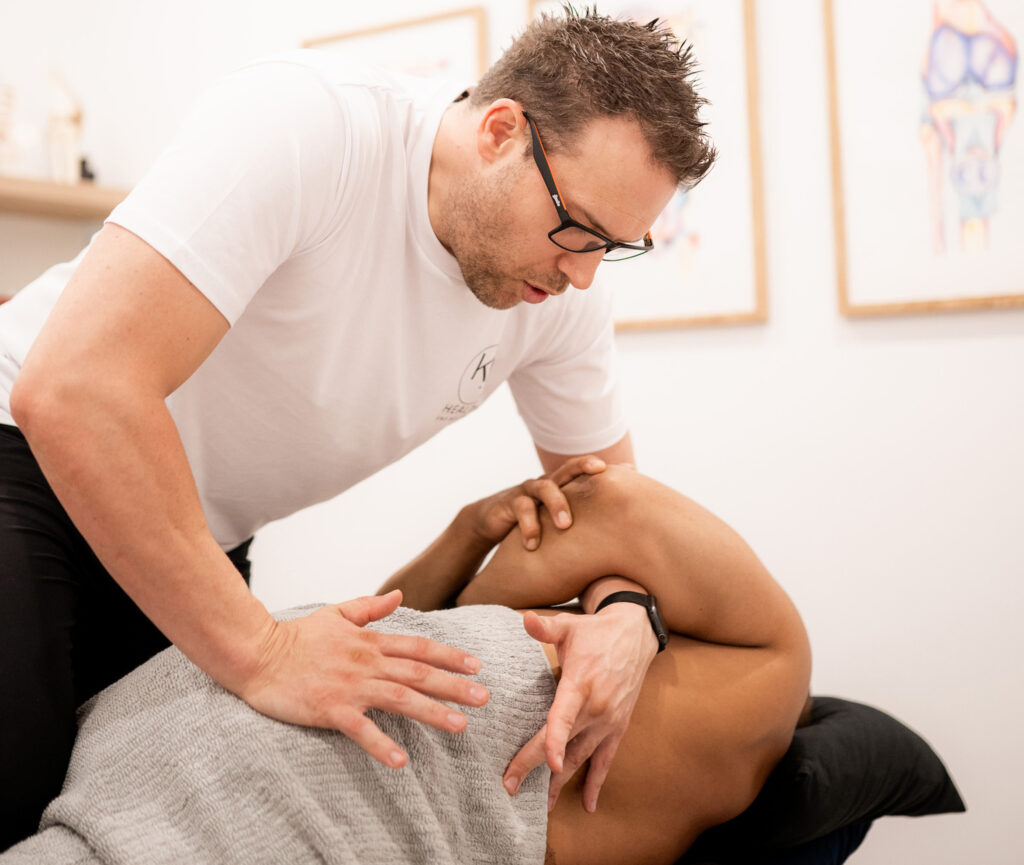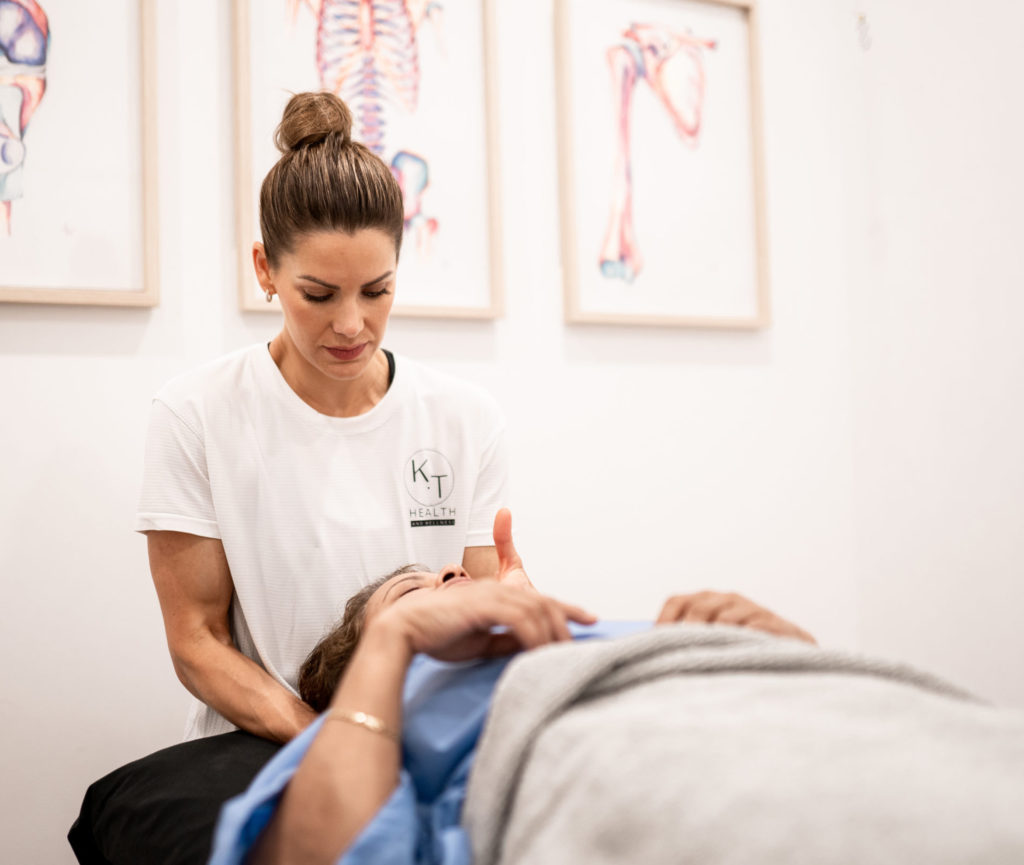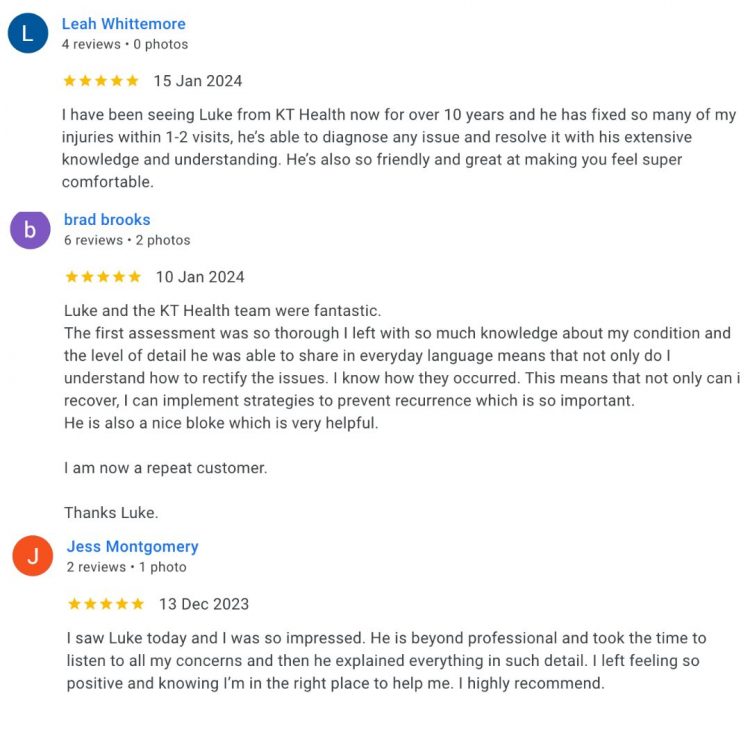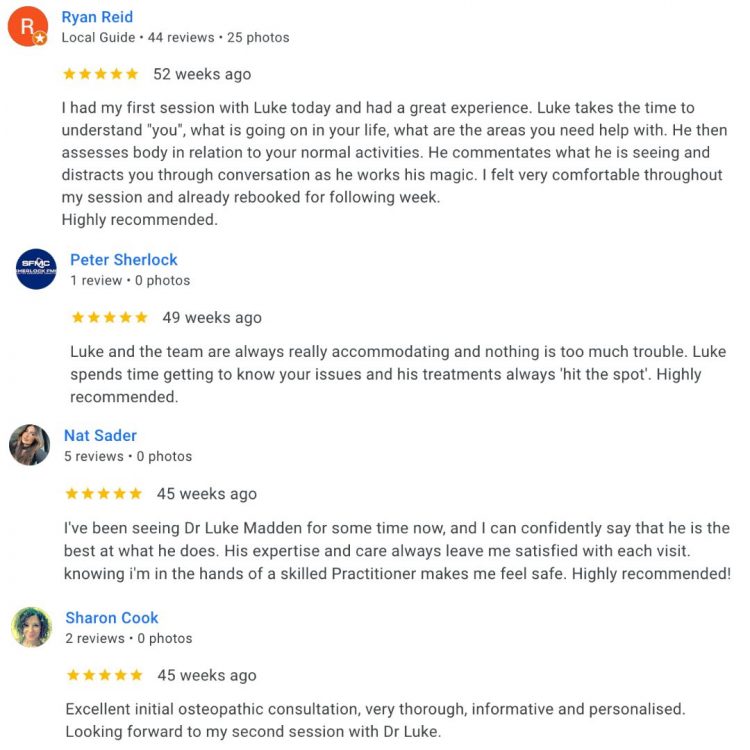Everything You Need to Know About Hamstring Tendonitis
What is Hamstring Tendonitis?
Hamstring tendonitis is when the tendons that attach the hamstring muscles to the pelvis or lower leg become irritated or inflamed, usually from overuse or poor movement patterns. It causes deep pain in the buttock or upper back of the thigh, especially during running, sitting, or bending forward.
An analogy…
Think of the tendon like a rope that connects a muscle to bone. If you keep pulling that rope over and over without giving it time to rest, it starts to get frayed and inflamed, that’s what tendonitis is.
What are other names that hamstring tendonitis can be called?
Hamstring Tendinopathy, Hamstring Tendinitis, Biceps Femoris Tendinopathy
What causes hamstring tendonitis?
The hamstrings attach to the ischial tuberosity (sitting bone) at the pelvis via strong tendons. These tendons transmit force when you run, bend, or extend your hip. If these movements are repetitive, too intense, or done with poor technique, the tendon can become overloaded and inflamed, especially at the upper attachment near the glutes.
What are the signs and symptoms of hamstring tendonitis?
- Deep aching pain in the buttock or upper hamstring
- Pain when sitting for long periods
- Pain or tightness when running, especially uphill or sprinting
- Pain with forward bending or straight leg stretching
- Tenderness at the top of the hamstring, near the sitting bone
- Weakness or stiffness in the back of the thigh
- Symptoms tend to build gradually and worsen over time with activity
What tests are used to diagnose hamstring tendonitis?
Palpation: Pressing on the upper hamstring tendon reproduces pain.
Resisted hip extension or knee flexion: Pain increases when trying to activate the tendon.
Straight leg raise test: Stretching the hamstring reproduces pain.
Single-leg bridge test: May reproduce pain or highlight weakness.
How long does hamstring tendonitis take to heal?
Mild to moderate cases may settle in 6 to 12 weeks with rest and rehab. Chronic or persistent tendonitis may take 3 to 6 months or longer to fully resolve.
How does hamstring tendonitis happen?
- Overuse from running, sprinting, or high-rep leg exercises
- Sudden increase in training load or intensity
- Poor glute activation or weak core
- Tight hamstrings or poor flexibility
- Incorrect running or gym technique
- Returning to sport too quickly after injury
- Prolonged sitting or poor posture
What treatment can help hamstring tendonitis?
- Relative rest
- Ice therapy after activity
- Eccentric and isometric strengthening
- Manual therapy (dry needling, soft tissue release, and joint mobilisation)
- Postural and movement retraining
- Shockwave therapy
What exercises or stretches can I do for hamstring tendonitis?
- Isometric hamstring holds (e.g. bridge hold, single-leg holds)
- Nordic hamstring curls
- Glute bridges, clamshells, and deadlifts
- Hip and core stability drills
What products can help with hamstring tendonitis?
Isometric hamstring in supine
Lie on your back.
Bend your knee to an angle as instructed by your clinician.
Pull your toes towards you.
Gently push your heel into the floor.
Hold this position as instructed.

Windmills (single leg)
Stand up straight and balance on one leg.
Lift your arms to the side and look straight ahead.
Keeping your back straight, lean forwards, pushing your hips back behind you until your back is horizontal.
You may need to soften your knee a little.
Lift your elevated leg directly back behind you.
Keeping your back and elevated leg straight, bring one hand down and across to reach the opposite side of your stance foot.
Your other arm should turn up to point at the ceiling.
Allow your body to rotate with the movement and your head to turn to look at your upper hand.
Come back to the centre, and rotate to the other side.
Continue this movement.

Nordic hamstring curl
This exercise requires a partner.
- Start position is kneeling on the floor with the partner behind holding onto your heels to keep the legs in place.
Lean forward from the waist slightly for three repetitions, returning to the starting position each time. Do not bend at the waist and keep the trunk and the thighs in line.
After the first three repetitions, increase the forward lean a bit more for every movement until you reach an angle from which you are unable to return, then fall forward keeping the trunk rigid and use a push-up to return to the starting position.

Hip extension in 4 point kneeling (short lever)
Start on your hands and knees with your hands under your shoulders and knees under your hips.
Your knees should be hips width apart.
Keeping your back straight tighten your abdominal muscles.
Lift one leg up behind you, keeping your knee at 90 degrees.
Think about pushing the sole of your elevated foot up towards the ceiling.
Control the movement as you bring your knee back down towards the floor, then repeat.
Ensure you do not arch your back or twist your hips as you do this.

4 point kneeling – hip extension to abduction
Start on your hands and knees with your hands under your shoulders and knees under your hips.
Begin arching your back by pushing your tail bone out, making a dish with your spine.
Then, round your back by tucking your tail bone in.
Find the mid-position and keep your back straight by gently tightening your pelvic floor and deep abdominal muscles, pulling your belly button in towards your spine.
Leading with your heel, lift one leg up behind you, keeping your knee at 90 degrees.
Think about pushing the sole of your elevated foot up towards the ceiling.
Extend as far as able ensuring you do not arch your back or twist your hips as you do this.
Next, bring your knee to the outside, ensuring your foot stays aligned with your hip.
Hold this position.
Control the movement as you bring your knee back down towards the floor, then repeat.

Prone hamstring curl
Lie on your front with your legs straight.
Bend your affected knee in towards your buttocks as far as you can.
Control the movement as you slowly lower the leg back down to the floor

STOP GUESSING – START MOVING
See what other people have said about our osteopaths
Trustindex verifies that the original source of the review is Google. KT health has really helped my back and i have been able to get back into competitive sportTrustindex verifies that the original source of the review is Google. Absolutely amazing, I see Louie Nouh who always listens and caters to my needs. He is amazing at his job and always helps alleviate my pain. I highly recommend Louie.Trustindex verifies that the original source of the review is Google. Friendly, supportive staff. Such a lovely place to exercise! Highly recommend.Trustindex verifies that the original source of the review is Google. Amazing instructor, I am new to Pilates felt very comfortable & supported.Trustindex verifies that the original source of the review is Google. I have been suffering from shoulder and neck pain for months - I saw Dr Louie Nouh a couple of time. His treatment really relived the pain. I have full range of movement now. His knowledge on exercise is fantastic.Trustindex verifies that the original source of the review is Google. Absolutely love reformer at menai. Instructors are amazing. Love Michaela and love the small classes. Highly recommend!Trustindex verifies that the original source of the review is Google. The trainers are all amazing , they explain everthing step by step and help where needed . It is an amazing place to relax get to know other people have a laugh . I recommend for anyone .Trustindex verifies that the original source of the review is Google. Ever since I came here I’ve been looked after by Louie and my shoulder is already feeling much better. Highly Recommend these are good people.Trustindex verifies that the original source of the review is Google. SENSATIONAL Chiropractor in Menai! I attended my first appointment with Dr Louis Nouh at KT Health & Wellness who is an absolute genius even after one session with him. He explained everything he intended to address about my lower back condition, all in easy to understand, layman’s terms. He said he would call me the next day to follow and see how I was feeling after our session and guess what, he did! During our session, he made me feel relaxed and comfortable especially as it was my first chiropractic appointment EVER! For some reason, I am actually looking forward to my subsequent sessions with him next week. Don’t get me wrong, he did poke, prod and crack me as necessary but the results made it seem worth it.Trustindex verifies that the original source of the review is Google. I have been seeing Melinda now for a couple of months to help with bursitis in my hip. She is one of the best practitioners I’ve ever seen.. With the use of various tools and techniques she has helped me recover much quicker than I expected. Thanks Mel and see you tomorrow!
We don't offer magic fixes or cures, but a sustainable approach to back pain.
Our Osteopaths will offer you a road map to help you take control of your back pain and feel great again.
BOOK YOUR OSTEOPATH VISIT TODAY
Book a Time with Dr Luke Madden Below
Book a Time with Dr Melinda Madden Below
Already have an account?
Book as a guest
- Book an Appointment






